Mina J. Bissell is an Iranian-American biologist known for her research on breast cancer. In particular, she has studied the effects of a cell's microenvironment, including its extracellular matrix, on tissue function.
Theodore Thomas Puck was an American geneticist born in Chicago, Illinois. He attended Chicago public schools and obtained his bachelors, masters, and doctoral degree from the University of Chicago. His PhD work was on the laws governing the impact of an electron upon an atom and his doctoral adviser was James Franck. During WW II Puck stayed at the University of Chicago. There he worked in the laboratory of Oswald H. Robertson on the study of how bacteria and viruses can spread through the air and on dust particles. After a postdoc position in the laboratory of Renato Dulbecco, Puck was recruited in 1948 to establish and chair the University of Colorado Medical School's department of biophysics. He retired from the University of Colorado Medical School in 1995 as professor emeritus, but continued to do laboratory work there until a few weeks before his death.

The Max Planck Institute for Medical Research in Heidelberg, Germany, is a facility of the Max Planck Society for basic medical research. Since its foundation, six Nobel Prize laureates worked at the Institute: Otto Fritz Meyerhof (Physiology), Richard Kuhn (Chemistry), Walther Bothe (Physics), André Michel Lwoff, Rudolf Mößbauer (Physics), Bert Sakmann and Stefan W. Hell (Chemistry).
Mechanobiology is an emerging field of science at the interface of biology, engineering, chemistry and physics. It focuses on how physical forces and changes in the mechanical properties of cells and tissues contribute to development, cell differentiation, physiology, and disease. Mechanical forces are experienced and may be interpreted to give biological responses in cells. The movement of joints, compressive loads on the cartilage and bone during exercise, and shear pressure on the blood vessel during blood circulation are all examples of mechanical forces in human tissues. A major challenge in the field is understanding mechanotransduction—the molecular mechanisms by which cells sense and respond to mechanical signals. While medicine has typically looked for the genetic and biochemical basis of disease, advances in mechanobiology suggest that changes in cell mechanics, extracellular matrix structure, or mechanotransduction may contribute to the development of many diseases, including atherosclerosis, fibrosis, asthma, osteoporosis, heart failure, and cancer. There is also a strong mechanical basis for many generalized medical disabilities, such as lower back pain, foot and postural injury, deformity, and irritable bowel syndrome.
The Physical Sciences in Oncology Network (PS-ON) is a network of centers and projects set up by the National Institutes of Health (NIH) National Cancer Institute (NCI) to link the physical sciences with the study of cancer. The program was launched in 2009 with Physical Sciences in Oncology Centers (PS-OCs) investigating complex and challenging questions in cancer research from a physical sciences perspective. To explore how the NCI could continue to support the integration of physical sciences and cancer research, a Think Tank and series of Strategic Workshops were held in 2012. These meetings served to update opportunities at the interface of physical sciences and cancer research and guided the development of the second phase including Physical Sciences in Oncology Projects (PS-OPs).
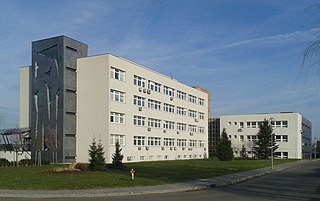
Institute of Experimental Medicine, Academy of Sciences of the Czech Republic (IEM) is focused on biomedical research, incl. cell biology, neuropathology, teratology, cancer research, molecular embryology, stem cells and nervous tissue regeneration as such leading institution in the research in the CR it was selected as an EU Center of Excellence (MEDIPRA). IEM is member of Network of European Neuroscience Institutes (ENI-NET).

Katherine Koontz Sanford, also known as Katherine Sanford Mifflin, was an American biologist and cancer researcher who worked at the National Cancer Institute for nearly 50 years, serving as head of Laboratory of Cellular and Molecular Biology. In the 1940s she became the first person to successfully clone a mammalian cell in vitro, which allowed for more efficient means of creating pure strains of cells for study. She also developed the first laboratory test to distinguish people with Alzheimer's disease and people predisposed to cancer.
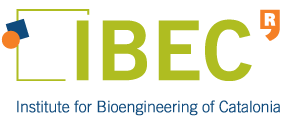
The Institute for Bioengineering of Catalonia (IBEC) is an institution engaged in basic and applied research in bioengineering and nanomedicine, with experts working on tissue regeneration, biomechanics, molecular dynamics, biomimetics, drug delivery, organs ‘on-a-chip’, cell migration, stem cells, artificial olfaction and microbial biotechnology. The institute was created by the Government of Catalonia, the University of Barcelona and the Polytechnic University of Catalonia in December 2005 and is located at the Barcelona Science Park. The director of the institute is Prof. Josep Samitier, who took over from founding director Josep A. Planell i Estany in 2013. In 2014 IBEC was named a "Severo Ochoa Centre of Excellence" by the Spanish Ministry of Economy and Competitiveness.
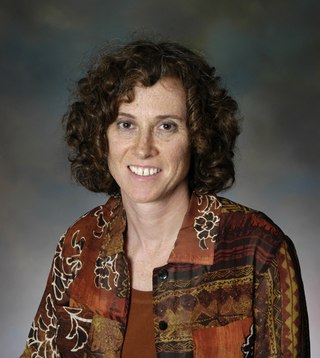
Clare M. Waterman is a cell biologist who has worked on understanding the role of the cytoskeleton in cell migration. Waterman is a Distinguished Investigator, Chief of the Laboratory of Cell and Tissue Morphodynamics, and Director of the Cell and Developmental Biology Center at the National Heart, Lung, and Blood Institute (NHLBI), in the National Institutes of Health (NIH) in Bethesda MD, USA. Waterman has received several awards and honors, including the Sackler International prize in Biophysics, the NIH Director’s Pioneer Award, and the Arthur S. Flemming Award for Public Service. In 2018, she was elected to the National Academy of Sciences. She currently serves on the editorial boards of eLife, Current Biology and Journal of Microscopy.
Physical oncology (PO) is defined as the study of the role of mechanical signals in a cancerous tumor. The mechanical signals can be forces, pressures. If we generalize we will speak of "stress field" and "stress tensor".
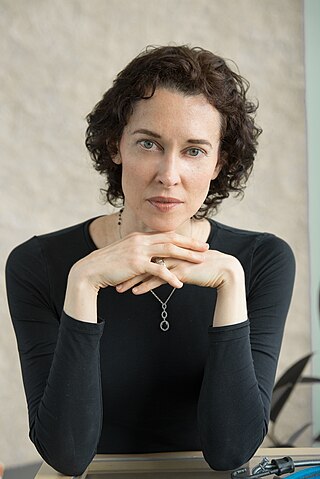
Jennifer Hartt Elisseeff is an American biomedical engineer, ophthalmologist and academic. She is the Morton Goldberg Professor and Director of the Translational Tissue Engineering Center at Johns Hopkins Department of Biomedical Engineering and the Wilmer Eye Institute with appointments in Chemical Engineering, Biomedical Engineering, Materials Science and Orthopedic Surgery. Elisseeff's research is in the fields of regenerative medicine and immunoengineering.
Viola Vogel, also known as Viola Vogel-Scheidemann, is a German biophysicist and bioengineer. She is a professor at ETH Zürich, where she is head of the Department of Health Sciences and Technology and leads the Applied Mechanobiology Laboratory.
Brian M. Salzberg is an American neuroscientist, biophysicist and professor. He is Professor of Neuroscience and of Physiology at the Perelman School of Medicine, University of Pennsylvania.
Irene Georgakoudi is a Greek biophysicist and Professor of Biomedical Engineering at Tufts University, where her work focuses on developing non-invasive medical imaging techniques based on optical spectroscopy for applications in medical diagnostics and therapeutics.
Shelly R. Peyton is an American chemical engineer who is the Armstrong Professional Development Professor in the Department of CHemical Engineering at the University of Massachusetts Amherst. Her research considers the development of biomaterials to investigate metastatic cancer and potential new therapies.
Samira Musah is an American biomedical engineer and professor at the Duke University Pratt School of Engineering. She is known for her work in biomimetic systems, in particular for her work in developing an organ-on-a-chip model of the kidney glomerulus during her postdoctoral fellowship.
Yanlan Mao is a British biologist who is a professor at University College London. Her research considers cell biology and the molecular mechanism that underpin tissue formation. She was awarded the Royal Microscopical Society Medal for Life Sciences in 2021.
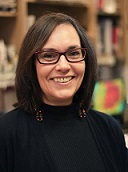
Edna "Eti" Cukierman is a Mexican biochemist who is a professor at the Fox Chase Cancer Center. She serves as co-director of the Marvin & Concetta Greenberg Pancreatic Cancer Institute. Her research investigates pancreatic cancer and the tumor microenvironment.
Cynthia "Cindy" Reinhart-King is an American biomedical engineer who is a University Distinguished Professor at Vanderbilt University. Her research considers cell motility and adhesion. She serves as president of the Biomedical Engineering Society.
Kristyn Simcha Masters is an American bioengineer who is professor and Chair of the Department of Bioengineering at the University of Colorado Denver. She works as Director of the Anschutz Medical Campus Center. Her research looks to create tissue-engineered models of disease, with a focus on cancer and cardiac disease.








